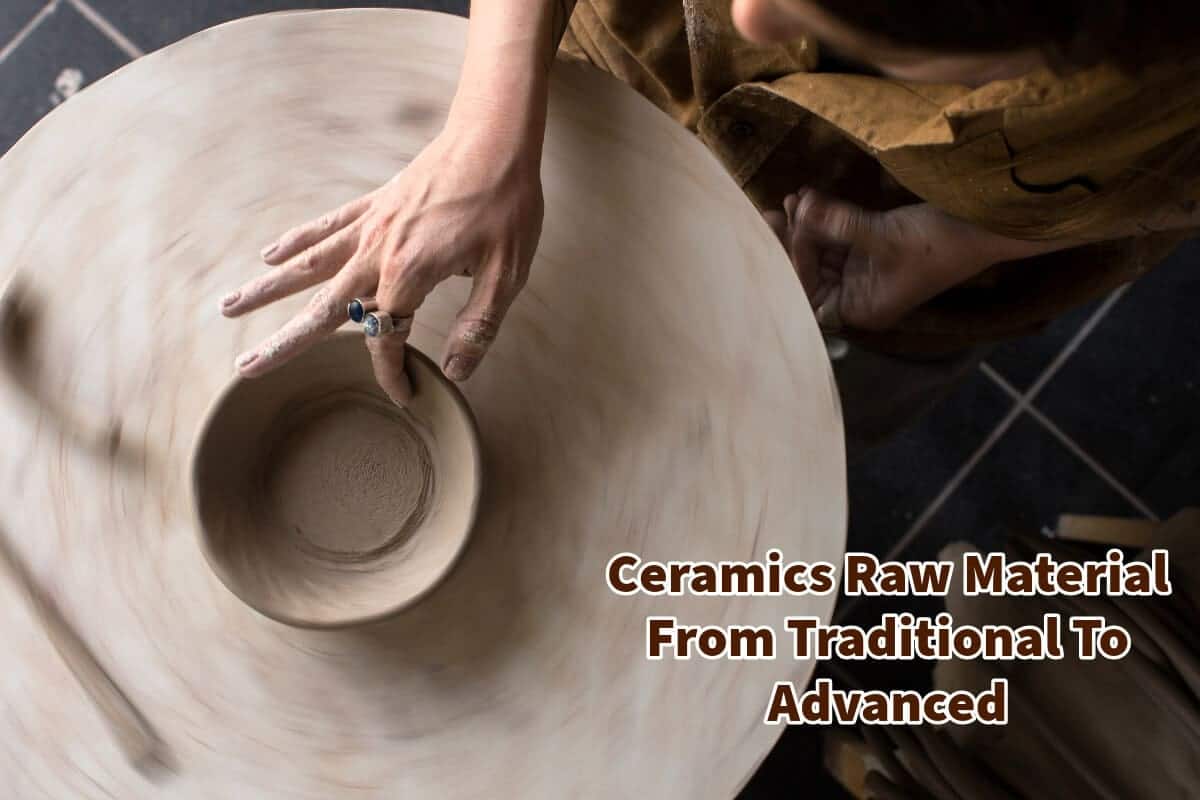The fascinating world of ceramics is built upon a rich tapestry of raw materials that have evolved from simple, naturally occurring substances to complex, engineered compounds. These raw materials serve as the foundational elements from which an astounding array of traditional and advanced ceramics are crafted.
While traditional ceramics have their roots in naturally abundant materials such as clay, silica, and feldspar, advanced ceramics represent a new frontier, employing cutting-edge synthetic materials like alumina, silicon carbide, and tungsten carbide.
Table of Contents
- Understanding The Raw Materials Of Ceramics: From Traditional To Advanced
- What Are Traditional Ceramics Made Out Of?
- Advanced Ceramics: A New Age
- Modern Ceramics: Beyond Kaolinite
- Related Content
This transition from traditional to advanced ceramics is not merely a material shift but signifies an extraordinary technological innovation and application journey. Whether it’s the simple earthenware pot that graces a family dinner table or the advanced ceramic components in a spacecraft, the raw materials define the capabilities and limitations of these versatile objects.
Read on as we delve into the captivating range of ceramic raw materials, tracing their evolution from traditional staples to the engineered substances propelling us into the future.
Understanding The Raw Materials Of Ceramics: From Traditional To Advanced
The world of ceramics is a fascinating blend of tradition and modernity. From the earliest clay pots shaped by human hands to cutting-edge ceramic components in electronic devices, the ceramic journey spans multiple cultures, civilizations, and technological advancements.
Central to this journey is the material itself. This article will look in-depth at traditional and modern ceramic raw materials, focusing specifically on kaolinite, alumina, silicon carbide, and tungsten carbide.
Traditional Ceramics: A Kaolinite Primer
One of the most widely used materials in traditional ceramics is kaolinite, a clay mineral foundational to many types of pottery and porcelain. But what exactly is kaolinite?
What Is Kaolinite?
Kaolinite is a clay mineral with the chemical formula Al2Si2O5(OH)4. This naturally occurring material is characterized by its fine particle size, plate-like structure, and relatively low shrink-swell capacity.
It’s a primary ingredient in the manufacture of china clay or kaolin. This white, soft, and plastic clay is an essential raw material in ceramics, particularly in creating porcelain.
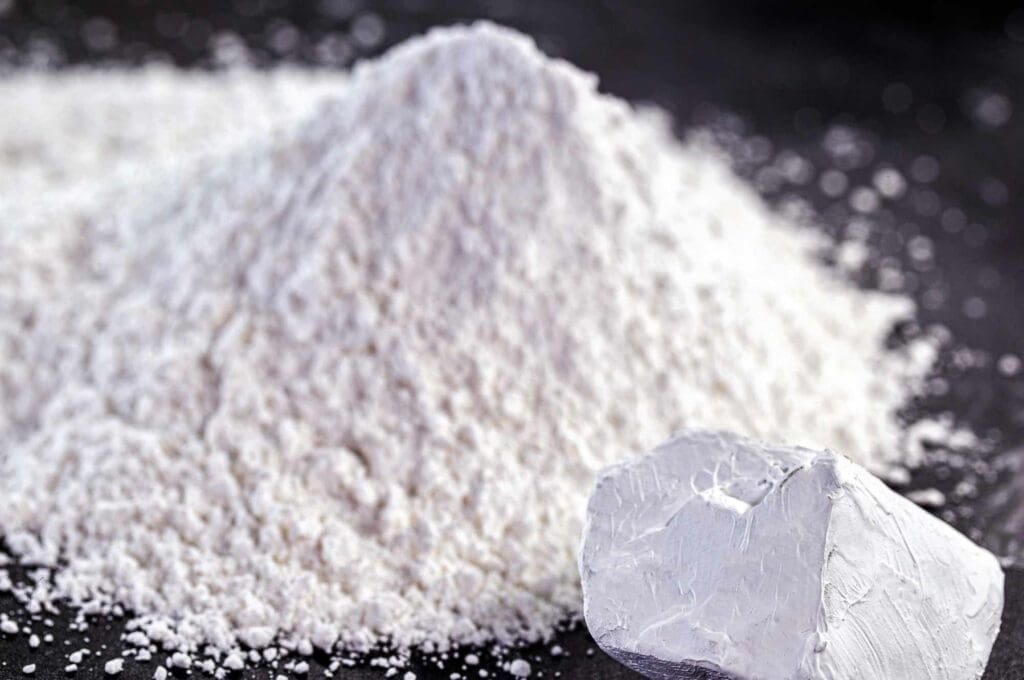
Why Is Kaolinite Important?
The significance of kaolinite in ceramics can’t be overstated. Its unique properties—low iron content, whiteness, and the ability to maintain its shape when molded—make it ideal for the delicate and detailed work required in porcelain manufacturing.
The mineral helps achieve high mechanical strength and allows for the porcelain’s characteristic translucency thanks to its fine particle size and purity.
Moreover, kaolinite is abundantly available, making it an economically viable option for large-scale ceramic production.
Because it can withstand high temperatures without decomposing, it plays a crucial role in the firing process, transforming raw ceramic into a durable final product.
What Are Traditional Ceramics Made Out Of?
Traditional ceramics are made primarily from natural raw materials such as clay, silica, and feldspar. Let’s delve into the roles these components play in the formation of traditional ceramics:
Clay
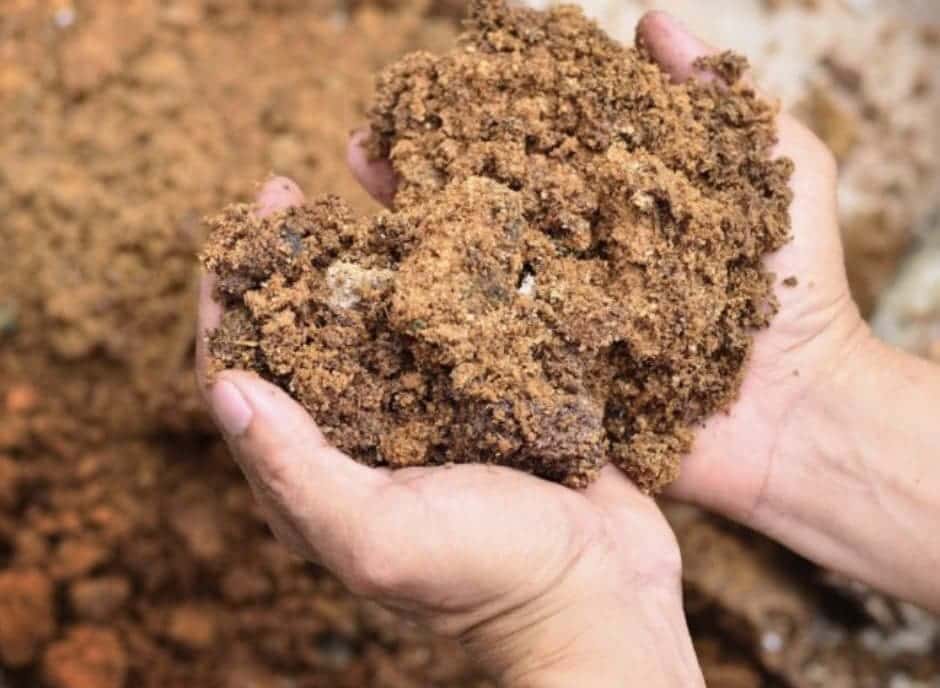
Clay serves as the fundamental building block in the making of traditional ceramics. Rich in aluminum silicate minerals, clay provides plasticity, allowing it to be easily shaped and molded. Kaolinite is one form of clay.; there are various types of clay, including kaolin, earthenware, and fireclay, each lending distinct properties to the final product.
The composition of clay dramatically influences the mechanical strength, firing temperature, and color of the finished ceramic piece.
Silica (Quartz)
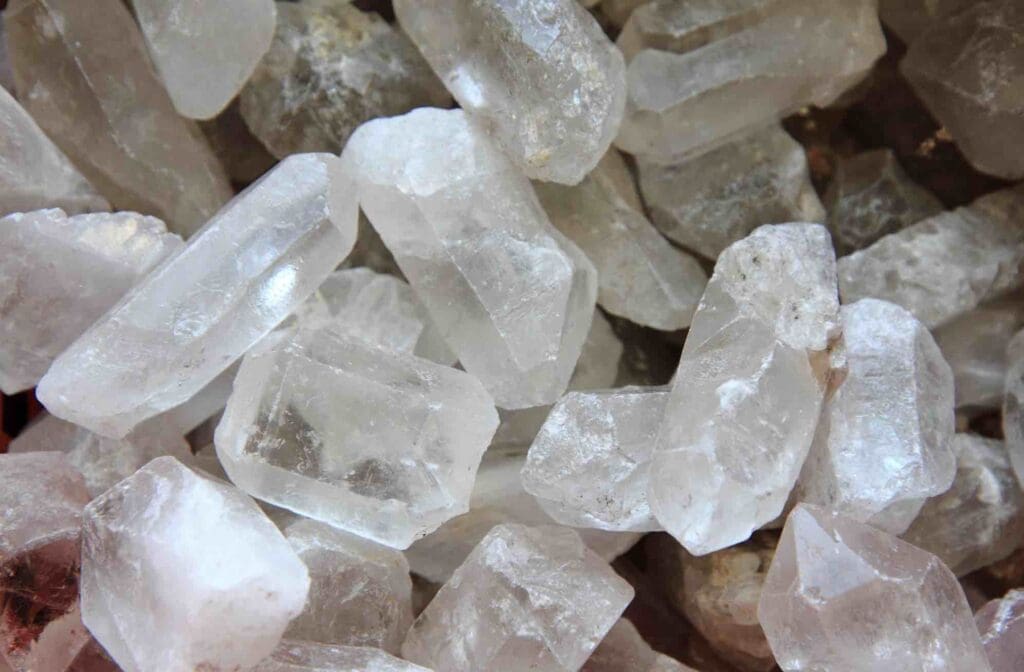
Silica is the second most abundant element on Earth’s crust, primarily existing in the form of quartz. In the context of ceramics, silica acts as a flux, lowering the melting point of clay and other materials during the firing process.
This enables the ceramic material to vitrify or become glass-like, giving the ceramic its characteristic hard and brittle properties.
Feldspar
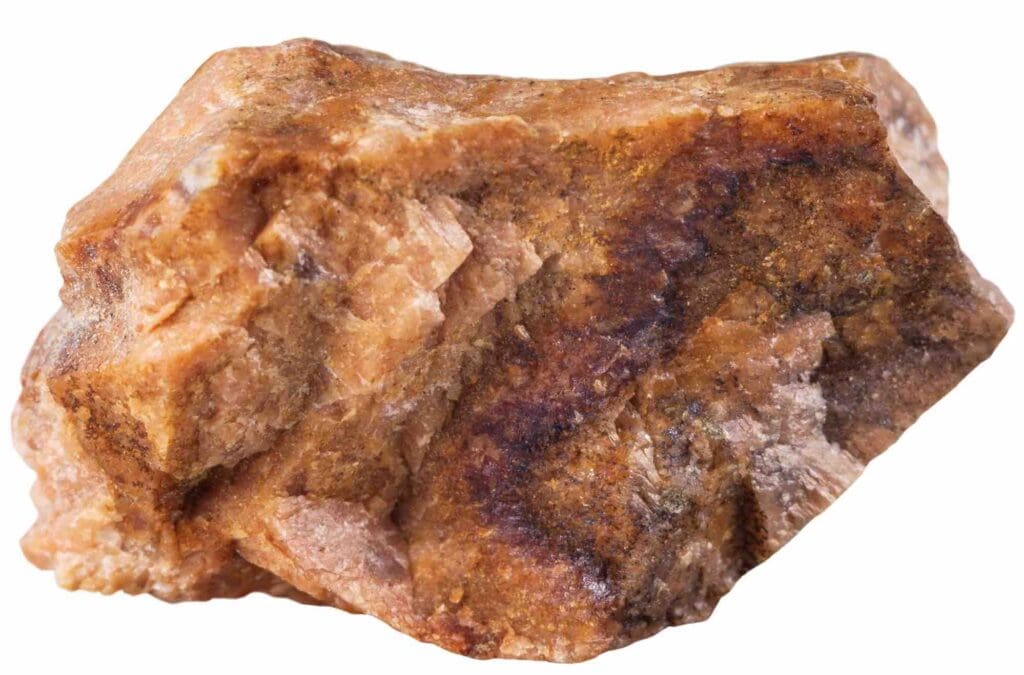
Feldspar, a crystalline mineral, often joins clay and silica in ceramic compositions. Acting as another flux further reduces the melting point and aids in vitrification. Feldspar can also add specific colors or qualities to the ceramic, enhancing its aesthetic or functional properties.
Structure And Composition
The structure of traditional ceramics is intricately linked to the composition of its raw materials. Factors such as the particle size of the clay, the ratio of clay to other materials like silica and feldspar, and any additives can all influence the final product’s texture, strength, and durability.
Advanced Ceramics: A New Age
In contrast to traditional ceramics that rely on natural raw materials, advanced ceramics utilize synthetic, high-quality powders. Common materials include aluminum oxide (alumina), silicon carbide, and silicon nitride.
These ceramics are engineered for specialized applications that demand high strength, hardness, durability, and toughness. Unlike traditional ceramics, advanced ceramics can be optimized for specific uses, such as electrical insulation, biomedical implants, and aerospace components.
While traditional ceramics use natural resources like clay, silica, and feldspar, advanced ceramics are crafted from specialized synthetic materials tailored for high-performance applications. Each has advantages, limitations, and ideal use cases, but both play an invaluable role in our daily lives and technological advancements.
Modern Ceramics: Beyond Kaolinite
While traditional ceramics primarily utilize clay-based materials like kaolinite, modern or advanced ceramics often employ more specialized compounds, namely alumina, silicon carbide, and tungsten carbide.
Aluminium Oxide (Alumina)

Alumina or aluminum oxide (Al2O3) is a high-performance ceramic material that is exceedingly hard and strong. It’s commonly used in various industrial applications, including electrical insulation, cutting tools, and abrasives.
Alumina offers excellent thermal stability, which makes it a preferred material for high-temperature environments.
Silicon Carbide (SiC)

Silicon carbide is another advanced ceramic material known for its hardness and strength. Its properties make it ideal for applications like car brakes, car clutches, and ballistic vests. Silicon carbide ceramics also have excellent thermal conductivity, making them useful in furnace components and semiconductor applications.
Tungsten Carbide (WC)
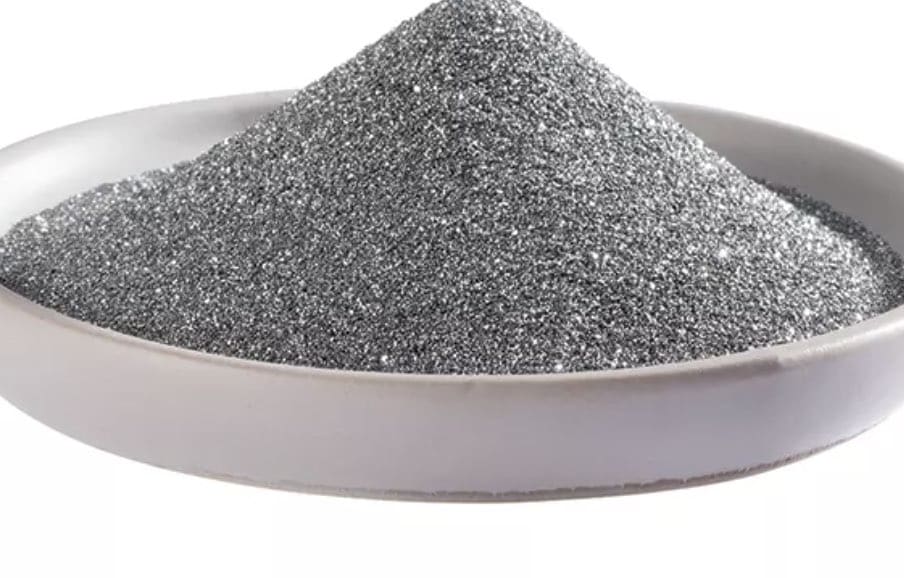
Tungsten carbide is renowned for its extreme hardness and high melting point. It’s often used in cutting tools, mining machinery, and rocket engine nozzles. Due to its resistance to wear and tear, tungsten carbide is instrumental in the lifespan of equipment used in highly abrasive environments.
Ceramics are a versatile class of materials with diverse applications. The choice of raw materials, be it traditional kaolinite or advanced substances like alumina, silicon carbide, and tungsten carbide, determines the properties and applications of the ceramic products.
While kaolinite is the cornerstone of traditional ceramics, lending itself beautifully to artistic and functional wares, advanced ceramics open new avenues in various industries, including electronics, aerospace, and healthcare.
Understanding these raw materials helps us appreciate the artistry involved in ceramic production and the technological advances that these materials facilitate.
As we continue to explore and innovate, ceramics offers endless possibilities anchored firmly in its rich blend of raw materials. From kaolinite clay’s softness to tungsten carbide’s stiff rigidity, ceramics are as versatile as they are enduring.
We would love to talk to you if you want to see how we can help you with any of your ceramic production.
Find out more about how Mondoro can help you create, develop, and manufacture excellent home decor and furniture products – don’t hesitate to contact me, Anita. Check out my email by clicking here or become a part of our community and join our newsletter by clicking here.
Mondoro gives out a FREE Lookbook to anyone interested. You can receive a copy of our latest Lookbook by clicking here.
Listen to our Podcast called Global Trade Gal. You can find it on all major podcast platforms. Try out to listen to one of our podcasts by clicking here.
Subscribe to our Mondoro Company Limited YouTube Channel filled with great videos and information by clicking here.
Related Content
How Does The Firing Temperature Affect Ceramics Production?
If a ceramic piece is not fired at the correct temperature, it will make a huge difference in the final product’s outcome. It is also important that the correct kiln is used for the production process. This is because many things must be considered when using a kiln to fire ceramics. During the firing process, many things can cause the final product to fail or crack.
You can learn more by reading our blog, How Does The Firing Temperature Affect Ceramics Production?, by clicking here.
Can I Put A Clearcoat On Top Of Lacquer Paint?
We spray a PU topcoat on top of our lacquer products. But to correctly spray the PU top coat, you need first to make sure the lacquer is completely dry, then spray a light PU clear coat on top of the paint. We sand in between each coat to ensure no issues with the topcoat layers.
You can read our blog on Can I Put A Clearcoat On Top Of Lacquer Paint? by clicking here.
3-D Porcelain Manufacturing, All You Need to Know
Home decor and home furnishing products in 3-D continue to be an important home decor trend. Many types of home furnishing products use 3-D elements. The 3-D porcelain is a very unique product in that it is using modern-day computerized technology to efficiently produce a variety of 3-D shapes and sizes.
You can learn more by reading our blog, 3-D Porcelain Manufacturing, All You Need to Know, by clicking here.

